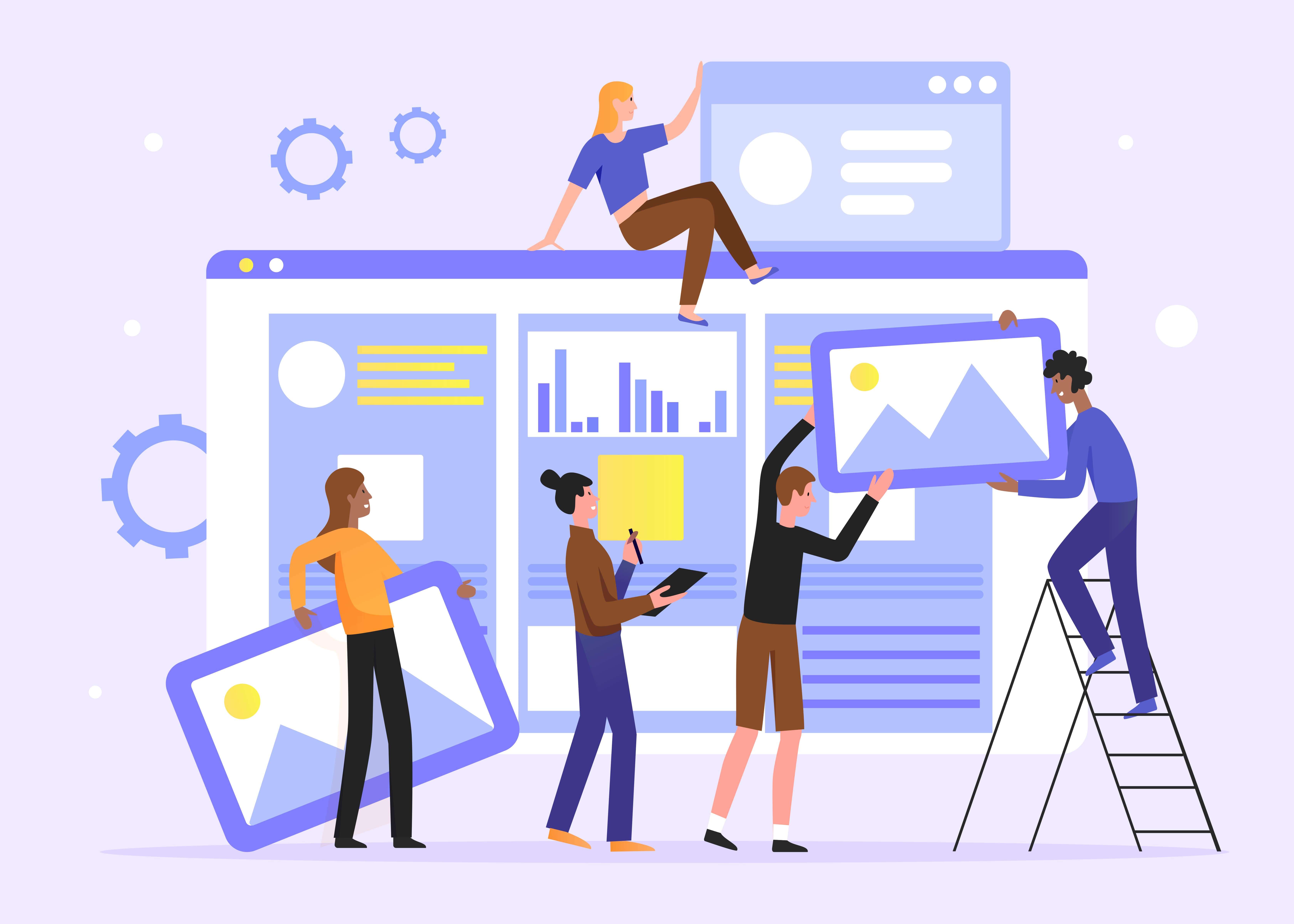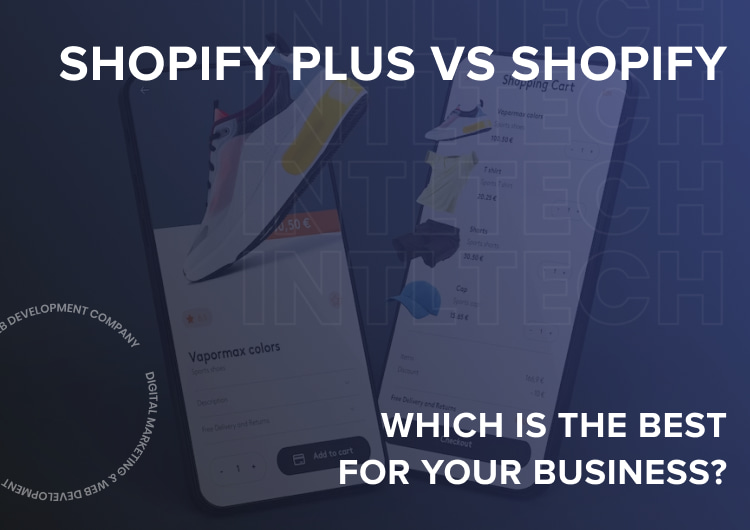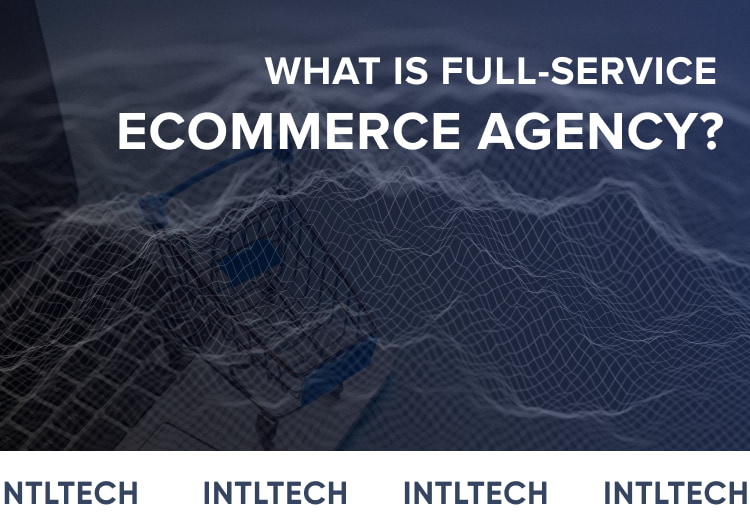Today, the importance of eCommerce websites is unquestionable. Even hardcore brick-and-mortar stores that managed to resist the influence of the Web now face the necessity to at least have an Instagram or Facebook page to stay connected with their audience. But why not go even further and improve business performance by creating your own web portal?
Sounds good, but there are still plenty of concerns. What exactly is a web portal? How is it different from a website? When is a web portal a must, and how to create and advertise one? Let’s waste no more time and jump straight to the point.
What Is the Difference Between Website and Web Portal?
At first, it’s easy to mistake one for the other. But the difference becomes more clear after defining both website and web portal.
What is a website? It’s a collection of web pages that users can reach freely by following a certain web address (URL). The content of eCommerce pages is usually aimed at particular companies and their services. To see the articles and read the news, users don’t need to enter the system or give any personal information to the website. The purpose of sites is to provide information to their visitors.
On the contrary, a web portal isn’t publicly available. To see the content, a person must log in first. The content is user-oriented and depends on the portal’s members. The themes aren’t limited to just one particular subject. Collecting information, notifying the members about content changes and new projects are some of the portal’s purposes.
When Does Your Business Need a Web Portal?
Whether your business needs web portal development services depends on the company itself. Web Portals are good for coordinating multi-located affiliates and employees. Collecting data for further business analysis is also a huge pro. Also, web portals provide more technology solutions for a coordinated work process than an average site.
To find out whether your company needs a web portal, ask yourself these questions:
- Does the communication suffer?
- Is a work chat not enough anymore?
- Does the business have affiliates in multiple locations?
- Does the company need a more advanced platform?
If the answer to all three is “yes”, then finding a decent web portal development company should definitely be considered.
How Many Types of Portals Exist?
Web portals are not all the same. Aside from their purpose, they can vary in their architecture as well. Different classifications can be found on the Internet, and the same type of portal can be given different names depending on the source. In this article, the 10 most important types of portals are going to be briefly reviewed.
Horizontal Portals
Horizontal portals provide their members with a wide range of content. Such portals may cover a lot of fields, connect plenty of companies, but this type doesn’t provide as deep and thorough information as vertical portals.
A horizontal portal is a “generalist” type.
Vertical Portals
Vertical web portals are the ones that provide their members with tools, information, and expertise in one specific industry. These portals are great for delving into a specific market field. Vertical portals may cover not as many companies and services as horizontal ones, but they allow users to gain better insight into one particular industry.
A vertical portal is a “specialist” type.
Partner Portals
This type of portal is meant to connect business partners and support them in coordinating their efforts. Usually, a partner portal has a company that delivers information to other smaller businesses it works with. Those businesses are called “partners”.
Partner portals are not designed for public access, thus their design is work-oriented and contains a variety of tools and applications to help co-workers manage their working process.
Enterprise Portals
Those are also called “Intranet portals”. When describing enterprise portals, the phrase “the Internet within the Internet” comes to mind. Enterprise portals allow the employees of big companies to communicate. They also provide support and relevant search information. The members of the enterprise portal can manage and schedule their working process with a variety of tools provided.
Without a web portal, it’s going to be especially hard for big enterprises to manage their projects. A well-designed platform can combine the functionality of a dozen of separate applications.
Vendor Portals
Vendor portals (also called “Supplier portals”) are the platforms where enterprises communicate with a variety of vendors. Basically, this type of web portal improves searching for new partners. All the information about future associates can be collected from one place instead of scrutinizing countless sites and social network pages.
A vendor portal can help optimize business processes by reducing the amount of work needed to find the right supplier.
Self-Service Portals
The goal of any self-service portal is to allow customers and employees more freedom and independence in finding web services and products, relevant data, and solutions to possible problems.
A well-designed vendor portal, a convenient self-service portal will allow employers to avoid spending extra money by hiring people to do the job clients can easily make themselves. The most prominent example of a self-service portal is an online ticketing system.
Patient Portals
Patient portals are designed to provide access to a person’s personal health information, scheduled appointments, recent visits, and received referrals.
With the patient portal, people can fill in the forms, receive prescriptions, make payments, and message their doctor without visiting a health center.
Community Portals
Community portals can be based on both offline and online groups of people sharing the same hobby or work interests. This type of portal is a good way to unite people from around the world in one online community.
Via such a web portal, people can share their ideas, ask for help and find solutions, gain access to information provided by other members. The ability to participate in discussions is also a huge advantage of any community portal.
Knowledge Portals
Knowledge web portal’s main goal is to provide employees with quick access to the solutions to work-related problems. Sometimes it’s hard to find a knowledgeable person in the nearby area. This is when knowledge portals may come in handy.
This type of portal improves project management performance and collaboration between workers scattered across the country or even across the globe. Accessible data and the ability to quickly find a solution to any problem accelerates the performance of the workers.
ECommerce Portals
ECommerce portals split into two groups:
- B2C Portals – business-to-clients web portals allow customers to have a great user experience. After the registration, they gain access to their purchase statistics, notifications about special offers, and new additions to the catalog.
- B2B Portals – when it comes to business-to-business web portals, their design is somewhat different from B2C portals. It’s important to create an atmosphere of cooperation and transparency to attract as many companies to join the portal as possible. There is no room for impulse buying, so the approach must be more balanced and professional.
How to Create a Portal? Web Portals Development Steps and Tips.
Portal development is not a task for an amateur. This process requires savvy with web design and programming, thus business owners must take it responsibly. Web portal development, like any other eCommerce, starts with preparation and continues with maintenance. But the most important steps are in between.
Be Prepared
Web portal development begins with outlining the most important ideas and goals for a platform. It’s highly desirable to imagine the final result clearly and make sure that the team of web portal developers is skilled enough before hiring it. Once the developers are found, here comes the planning.
Have a Plan for a Project
Planning is where the real work starts. It’s time for business owners and their team of developers to discuss these 4 questions:
- Is the portal going to be vertical or horizontal?
- What is the purpose of the web portal? Should it provide assistance in solving problems, be an eCommerce marketplace, or get people and organizations together?
- Who is the target audience of the portal?
- Which features are going to be the most useful?
When everyone has agreed on the answers, it’s time to continue your portal development.
Study Features
It never hurts to learn about as many features as possible. Who knows which one is going to work? The most important contemporary features are:
- Simple navigation – it should be easy to find a way around a portal and not to get lost and frustrated in the process;
- Notifications – the members of a web portal must stay informed and receive useful tips;
- Optimization – hour-long loading screen can turn everyone into Hulk, even the most patient people on the Earth;
- Personalization – it’s crucial to provide a user with relevant content. For example, John Doe’s working schedule is unlikely to be interesting for clients.
Continue Development with Web Portal Designing
Design can ruin and save projects. It’s important to find a person who knows current trends and has good taste. Some of the web portal development and design trends and rules are:
- Pleasant color palette;
- The visible navigation bar and/or menu;
- Non-invasive notifications;
- Streamlined information;
- Understandable categorization;
- Integration with a variety of payment options;
- Choice of language;
- Easy registration.
After all the architecture design choices are made, it’s time to implement them into the code. Developers must ensure decent optimization and make the portal mobile-friendly.
Test the Portal
Make sure that everything is nice and ready before finishing the development and introducing a web portal to your audience.
The most important thing to check is whether there are some bugs or errors that prevent portal users from joining. It’s a shame if troubled coordination gets in the way of business growth and development.
Provide an Access
Now that the portal development is over, it’s time to introduce it to your audience. See if the portal is well-advertised and people can join it easily. Also, ensure access to your employees and partners as well.
Don’t Forget to Maintain It
Just as any social network, web application, or site, a web portal needs constant maintaining. It’s important not to waste all the efforts by neglecting proper customer support or allowing the code and interface to become outdated.
How to Make a Web Portal Popular? Some Ways to Promote It.
Creating a portal is just the first part of the whole affair. There are 5 major components that will ensure cost-effective and fruitful promotion.
- Trained marketing team – marketing experts must know everything about the web portal. They must be able to explain why is it going to be a great UX;
- Social media integration – there is no better way to create connections with clients than via social networks and media. Facebook Ads and Instagram Ads are the most effective means of promotion;
- Content marketing – personalized and quality content will attract the audience to your web portal. It’s important to convince a person to start and continue using the platform;
- Branding – branding is not just a face but also the soul of a web portal. If your logo and motto are easily recognizable, then the portal will also stay in a customer’s memory;
- SEO – search engine optimization (SEO) techniques, including using relevant keywords and phrases, will move your portal to the top of the search results page.
Summarizing Web Portal Development
Building a web portal is a decision that requires deliberation. It’s necessary to understand whether a company does need its own web portal or if a simple website or Facebook page will be just enough.
Once the decision is made, here comes the time to choose between the types of portals and their features. There are plenty of variations, so creating an ideal portal is absolutely possible. The harder task is to find a development team with expertise in this field. Gladly, there are plenty of options on the market to choose from.
After the portal development is over, it’s up to the marketing team to advertise it and implement effective SEO techniques to improve search results.
Web portal development is a creative process that requires understanding its goals and visualizing the desirable result. Once your web portal is ready, your workers and clients will appreciate its comfortability and user-friendliness.
 0
0







